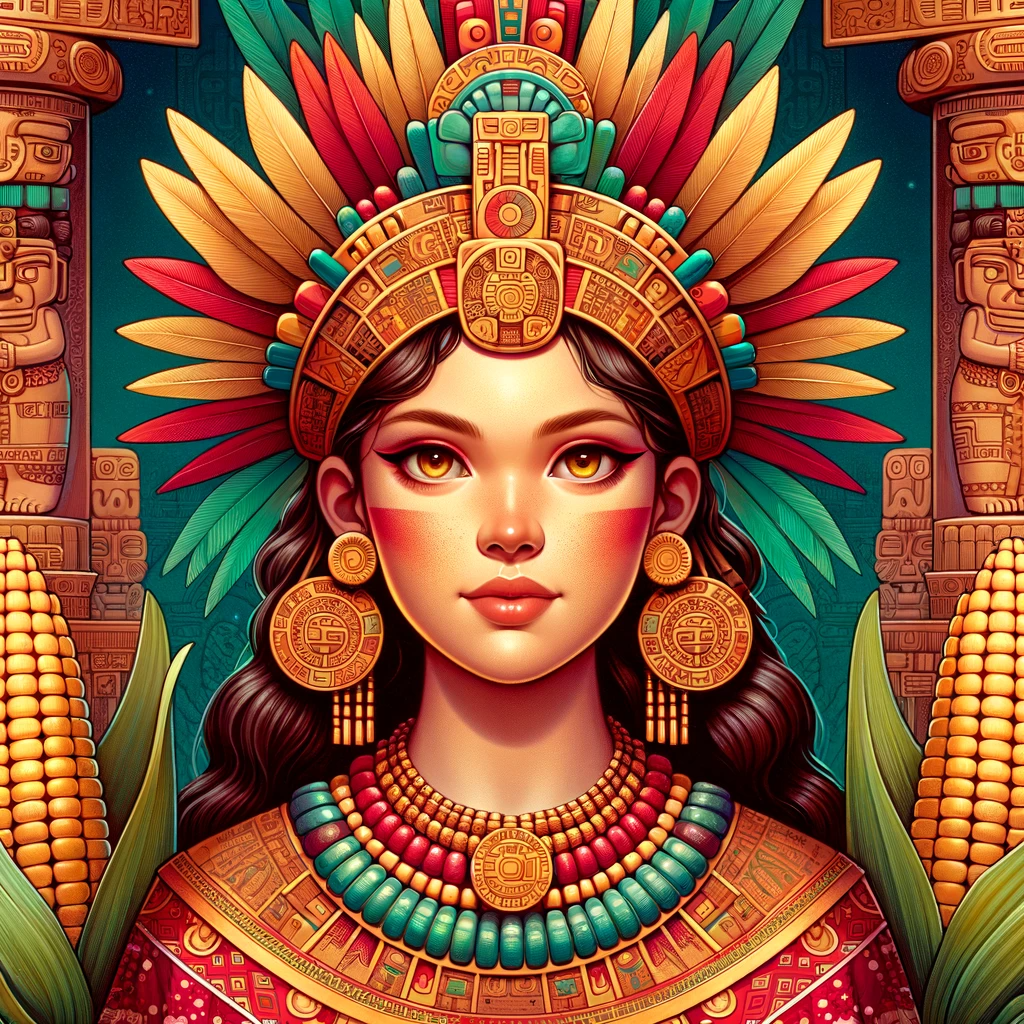
In the diverse pantheon of Aztec mythology, Chicomecoatl, an intriguing deity, stands out as a symbol of nourishment, fertility, and the sustenance of life. This article delves into the captivating world of Chicomecoatl, exploring her significance, representations, and the role she played in Aztec society.
Origins and Significance
Chicomecoatl, whose name translates to "Seven Serpent," is a prominent figure in Aztec mythology. As a goddess associated with maize, the staple crop of the Aztecs, she was revered as a deity of sustenance and fertility. The number seven in her name is often thought to represent abundance and is a sacred number in many Mesoamerican cultures.
Depictions and Symbolism
Chicomecoatl is commonly depicted in vibrant Aztec art, often seen carrying a double ear of corn, which symbolizes her connection to agriculture and fertility. In various iconographies, she is portrayed as a young girl or a woman wearing a flower headdress, signifying her role in the cycle of life and the regeneration of nature. Her representation often includes red ochre on her face, a symbol of the life-giving blood and the earth's fertility.
Cultural and Religious Practices
The worship of Chicomecoatl was integral to Aztec culture, reflecting the society's deep connection with agriculture. Rituals and ceremonies dedicated to her were primarily centered around the agricultural calendar. One of the most significant festivals in her honor was the Huey Tozoztli, celebrated in the spring. During this festival, young girls representing the goddess were adorned with maize flowers, embodying the spirit of Chicomecoatl. These rituals were not merely religious practices but also a way for the Aztec community to express gratitude for the earth's bounty and to ensure continued fertility and abundance.
Chicomecoatl in Modern Context
The legacy of Chicomecoatl transcends the ancient Aztec civilization, continuing to be a subject of interest in modern studies of Mesoamerican cultures. She represents the enduring relationship between humans and nature, particularly in the context of agriculture and sustenance. Today, Chicomecoatl is often referenced in discussions about fertility, agriculture, and the role of women in ancient societies. Her depiction in art and literature serves as a reminder of the rich cultural heritage of the Aztecs and the intricate tapestry of their mythological beliefs.
Conclusion
Chicomecoatl, as an emblem of nourishment, fertility, and the life cycle, captures the essence of the Aztec understanding of the natural world and their reverence for the forces that sustain life. Her story and symbolism offer a window into the rich spiritual and cultural life of the Aztec civilization, highlighting their profound connection to the earth and its cycles. As we explore the depths of ancient mythologies, figures like Chicomecoatl provide invaluable insights into the beliefs, practices, and values of civilizations long past, allowing us to appreciate the complexity and beauty of human history and its diverse cultural expressions.
Origins and Significance
Chicomecoatl, whose name translates to "Seven Serpent," is a prominent figure in Aztec mythology. As a goddess associated with maize, the staple crop of the Aztecs, she was revered as a deity of sustenance and fertility. The number seven in her name is often thought to represent abundance and is a sacred number in many Mesoamerican cultures.
Depictions and Symbolism
Chicomecoatl is commonly depicted in vibrant Aztec art, often seen carrying a double ear of corn, which symbolizes her connection to agriculture and fertility. In various iconographies, she is portrayed as a young girl or a woman wearing a flower headdress, signifying her role in the cycle of life and the regeneration of nature. Her representation often includes red ochre on her face, a symbol of the life-giving blood and the earth's fertility.
Cultural and Religious Practices
The worship of Chicomecoatl was integral to Aztec culture, reflecting the society's deep connection with agriculture. Rituals and ceremonies dedicated to her were primarily centered around the agricultural calendar. One of the most significant festivals in her honor was the Huey Tozoztli, celebrated in the spring. During this festival, young girls representing the goddess were adorned with maize flowers, embodying the spirit of Chicomecoatl. These rituals were not merely religious practices but also a way for the Aztec community to express gratitude for the earth's bounty and to ensure continued fertility and abundance.
Chicomecoatl in Modern Context
The legacy of Chicomecoatl transcends the ancient Aztec civilization, continuing to be a subject of interest in modern studies of Mesoamerican cultures. She represents the enduring relationship between humans and nature, particularly in the context of agriculture and sustenance. Today, Chicomecoatl is often referenced in discussions about fertility, agriculture, and the role of women in ancient societies. Her depiction in art and literature serves as a reminder of the rich cultural heritage of the Aztecs and the intricate tapestry of their mythological beliefs.
Conclusion
Chicomecoatl, as an emblem of nourishment, fertility, and the life cycle, captures the essence of the Aztec understanding of the natural world and their reverence for the forces that sustain life. Her story and symbolism offer a window into the rich spiritual and cultural life of the Aztec civilization, highlighting their profound connection to the earth and its cycles. As we explore the depths of ancient mythologies, figures like Chicomecoatl provide invaluable insights into the beliefs, practices, and values of civilizations long past, allowing us to appreciate the complexity and beauty of human history and its diverse cultural expressions.